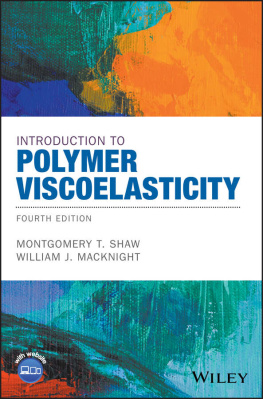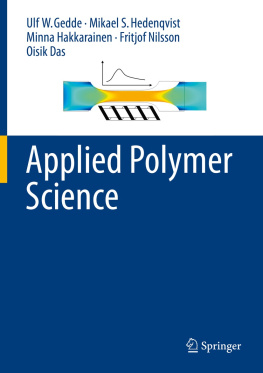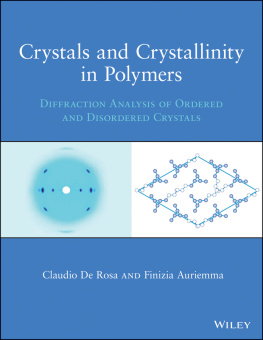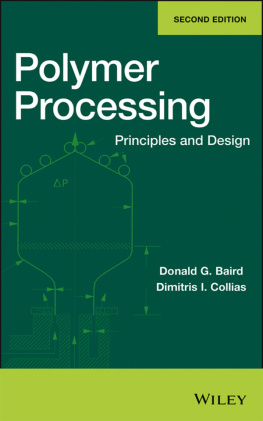
Copyright 2016 by John Wiley & Sons, Inc. All rights reserved
Published by John Wiley & Sons, Inc., Hoboken, New Jersey
Published simultaneously in Canada
No part of this publication may be reproduced, stored in a retrieval system, or transmitted in any form or by any means, electronic, mechanical, photocopying, recording, scanning, or otherwise, except as permitted under Section 107 or 108 of the 1976 United States Copyright Act, without either the prior written permission of the Publisher, or authorization through payment of the appropriate per-copy fee to the Copyright Clearance Center, Inc., 222 Rosewood Drive, Danvers, MA 01923, (978) 750-8400, fax (978) 750-4470, or on the web at www.copyright.com. Requests to the Publisher for permission should be addressed to the Permissions Department, John Wiley & Sons, Inc., 111 River Street, Hoboken, NJ 07030, (201) 748-6011, fax (201) 748-6008, or online at http://www.wiley.com/go/permissions.
Limit of Liability/Disclaimer of Warranty: While the publisher and author have used their best efforts in preparing this book, they make no representations or warranties with respect to the accuracy or completeness of the contents of this book and specifically disclaim any implied warranties of merchantability or fitness for a particular purpose. No warranty may be created or extended by sales representatives or written sales materials. The advice and strategies contained herein may not be suitable for your situation. You should consult with a professional where appropriate. Neither the publisher nor author shall be liable for any loss of profit or any other commercial damages, including but not limited to special, incidental, consequential, or other damages.
For general information on our other products and services or for technical support, please contact our Customer Care Department within the United States at (800) 762-2974, outside the United States at (317) 572-3993 or fax (317) 572-4002.
Wiley also publishes its books in a variety of electronic formats. Some content that appears in print may not be available in electronic formats. For more information about Wiley products, visit our web site at www.wiley.com.
Library of Congress Cataloging-in-Publication Data
Names: Guo, Qipeng, editor.
Title: Polymer morphology : principles, characterization, and processing / edited by Qipeng Guo.
Description: Hoboken, New Jersey : John Wiley & Sons, Inc., [2016] | Includes bibliographical references and index.
Identifiers: LCCN 2015038844 (print) | LCCN 2015040343 (ebook) | ISBN 9781118452158 (cloth) | ISBN 9781118892763 (ePub) | ISBN 9781118892770 (Adobe PDF)
Subjects: LCSH: Polymers. | Polymerization. | Crystalline polymers. | Surface chemistry.
Classification: LCC QD381.9.S97 P625 2016 (print) | LCC QD381.9.S97 (ebook) | DDC 547/.7dc23
LC record available at http://lccn.loc.gov/2015038844
Preface
Polymer morphology refers to the order within macromolecular solids and the structural constitution on the levels from nanoscale to a submicron and micron scale. The morphology plays an important role in the processing and application of polymeric materials. It embraces the processes of formation such as crystallization, deformation, and so on and the consequences for material properties as well as product performance.
Many books have been written on different particular aspects of polymer morphology. However, this book includes the basic principles and methods for morphological characterization, followed by a comprehensive understanding of polymer morphology, properties, and processing in a range of polymeric materials. It is composed of two parts: I. Principles and Methods of Characterization and II. Morphology, Properties, and Processing. Part I starts with an overview and prospects of polymer morphology, and then presents a detailed account of the principles and methods that are most used for investigation of polymer morphology. Morphologyproperty relationships are critical in the processing and applications of polymeric materials, which are addressed in Part II. The way in which the material is processed is a key determinant of the morphology and resulting properties. Understanding the morphology and the processes of its formation is essential in order to achieve the desired properties of a polymeric material in a certain application. A sampling of work in this area is also provided in Part II. I hope that it will not only serve as a useful textbook for advanced undergraduate and postgraduate students but also as a concise handbook for researchers in academia and engineers in related industries.
I express my appreciation and respects to all the contributors for their commitment, patience, and cooperation. Finally, I wish to express my sincere gratitude to the staff of John Wiley & Sons, Inc., especially Jonathan T. Rose who invited me to edit this comprehensive book and provided helpful support, and also Purvi Patel and Amanda Amanullah for her assistance during the edition.
Qipeng Guo
2015
Australia
List of Contributors
- Ruth Cardinaels, Department of Chemical Engineering, KU Leuven, 3001 Leuven, Belgium
- Pierre J. Carreau, Chemical Engineering Department, Ecole Polytechnique de Montreal, Montreal H3T 1J4, Canada
- K. L. A. Chan, Department of Chemical Engineering, Imperial College London, London SW7 2AZ, UK
- Peng Chen, Department of Materials, School of Chemistry and Chemical Engineering, Anhui University, Hefei, 230039, China
- Sossio Cimmino, Istituto per i Polimeri, Compositi e Biomateriali, Consiglio Nazionale delle Ricerche, 80078, Pozzuoli, Italy
- M.-B. Coltelli, Department of Civil and Industrial Engineering, University of Pisa, 56126, Pisa, Italy
- Duraccio Donatella, Istituto per i Polimeri, Compositi e Biomateriali, Consiglio Nazionale delle Ricerche, 80078, Pozzuoli, Italy; Istituto per le Macchine Agricole e Movimento Terra (IMAMOTER) Consiglio Nazionale delle Ricerche, Torino, 10135, Italy
- So Fujinami, RIKEN SPring-8 Center, RIKEN, Hyogo 679-5148, Japan
- Abbas Ghanbari, Chemical Engineering Department, Ecole Polytechnique de Montreal, Montreal H3T 1J4, Canada
- G. Groeninckx, Department of Chemistry, Division of Molecular and Nanomaterials, Laboratory of Macromolecular Structure Chemistry, Katholieke Universiteit Leuven, 3001 Heverlee, Belgium
- Jean-Michel Guenet, Institut Charles Sadron, CNRS-Universit de Strasbourg, 67034 Strasbourg, France
- Qipeng Guo, Institute for Frontier Materials, Deakin University, Geelong, Victoria, 3220, Australia
- Yanchun Han, State Key Laboratory of Polymer Physics and Chemistry, Changchun Institute of Applied Chemistry, Chinese Academy of Sciences, Changchun, 130022, China
- Masanori Hara, Department of Chemical and Biochemical Engineering, Rutgers University, Piscataway, NJ 08854-8058, USA
- Charef Harrats, Laboratoire de Chimie Applique (LAC), DGRSDT, Institut des Sciences et Technologie, Ctr Univ Belhadj Bouchaib, Ain Temouchent 46000, Algeria
- Xuehao He, Department of Chemistry, School of Science, Tianjin University, Tianjin, 300072, China
- Marie-Claude Heuzey, Ecole Polytechnique de Montreal, Montreal H3T 1J4, Canada
- Wenbing Hu, Department of Polymer Science and Engineering, School of Chemistry and Chemical Engineering, Nanjing University, Nanjing 210093, China
- S. G. Kazarian, Department of Chemical Engineering, Imperial College London, London SW7 2AZ, UK
- Werner Lebek,
Next page










